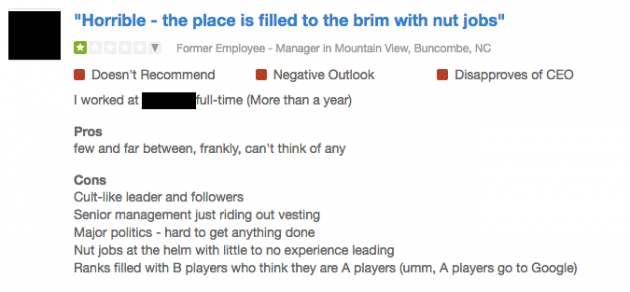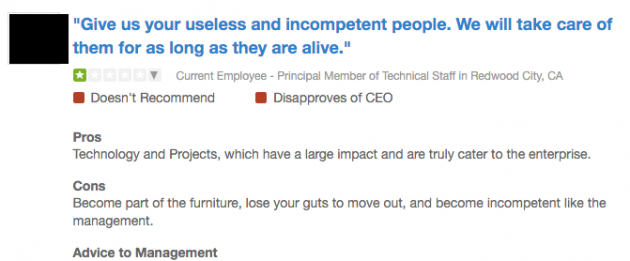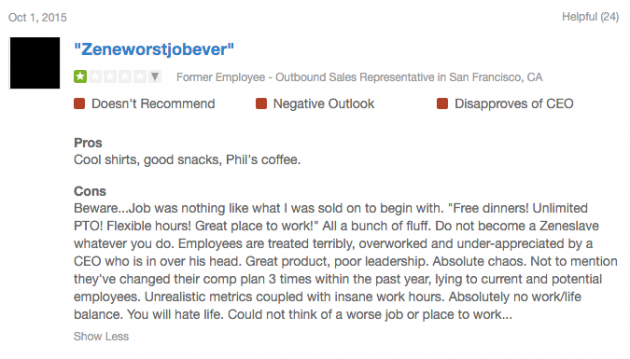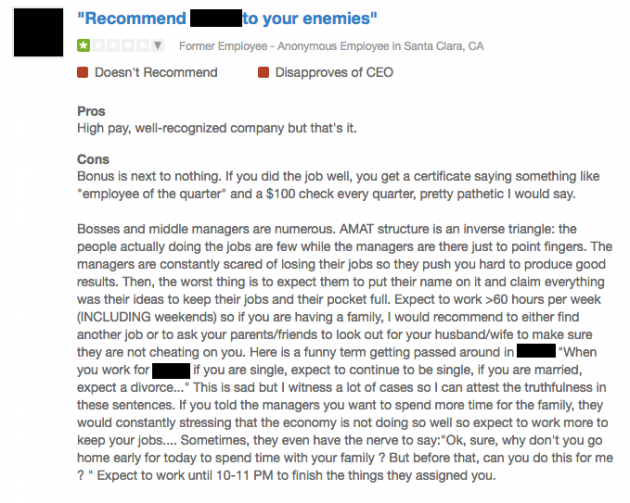Tapping into Team Feedback
Photo by Jon Tyson on Unsplash.
I have read many definitions of what a brand is, but I believe the best one is by Jeff Bezos of Amazon fame. “Your brand is what other people say about you when you're not in the room.”
If an unhappy team member complains about your company and you aren’t in the room to hear it, how do you know it was said? This sounds like a philosophical thought experiment like “If a tree falls in a forest and no one is around to hear it, does it make a sound?" It’s not.
The feedback (good or bad) that your staff members are providing is paramount to building a strong culture. Not only can unhappy people cost your business tens of thousands of dollars in rehiring and retraining when they decide to quit, but they can hinder your rehiring process too. Of course, it’s most important to focus on being nice and preventing this in the first place.
A good first step is to read the reviews of your current and former employees. To do this, I recommend searching for your company name on Glassdoor and Indeed. The following are a few examples Sunil Rajaraman found for his article, The 5 Most Hilarious Glassdoor Reviews of Silicon Valley Employers.
Employee Satisfaction Surveys
As a general rule, the more questions you ask in a survey the fewer answers you will receive. Brevity is important. Begin by understanding why you are creating an employee survey in the first place, perhaps it’s based on the feedback you discovered researching your company on the aforementioned sites.
I spoke with Susan Baier, whose work I admire at Audience Audit for her advice about the best tips for employee surveys.
Five Tips for Employee Surveys
1. Make it anonymous. Even if you tell people it is, if you're conducting it they might wonder if you're tracking their IP address or something. If you can have a 3rd party administer it, all the better. At the end, you can ask respondents if they would like to have a conversation with someone about their responses, but make it OPTIONAL. Nobody has to provide identifying information, department, level, location, etc.
2. Don't ask leading questions, like "Aren't we great?" "Is this the best place you've ever worked?" Instead, stick to: "How would you rate your compensation compared to your peers at other organizations?" etc.
3. Make sure you give people a full range of response options. No giving them a scale like this:
Excellent
Really good
Pretty good
Okay
Not that great
Scales need to be balanced, with an equal number of positive responses as negative ones. You can't leave off "terrible" just because you don't want anyone to pick it.
4. Ask them how likely they think it is that you'll act on their feedback if they provide any. You can learn a lot just from that question.
5. Include an open-ended question asking for their advice, suggestions, etc.
Tap into your team’s feedback
Try not to take any negative feedback you receive from the employee surveys and the reviews you read online to heart. Use what you discover to improve your company culture.
Do you want to stop wasting money on recruiting and training? Do you want happier, more connected employees? Focus on how you hear your team.
“Your brand is what other people say about you when you’re not in the room.”






